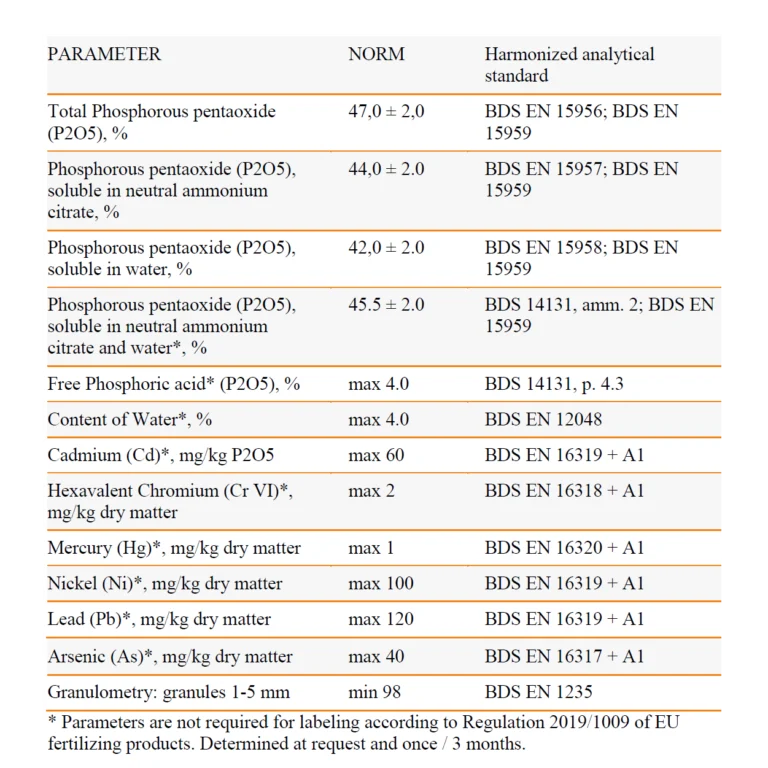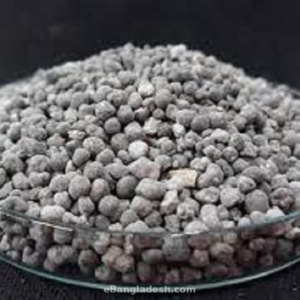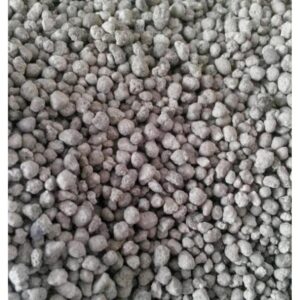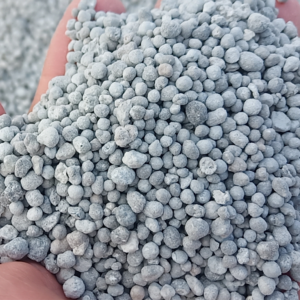Triple Superphosphate
Triple superphosphate (TSP) was one of the first high-analysis phosphorus (P) fertilizers that became widely used in the 20th century. Technically, it is known as calcium dihydrogen phosphate and as monocalcium phosphate, [Ca(H₂PO₄)₂ .H₂O]. Despite its excellent history as a P source, its use has declined as other P fertilizers have become more popular.
Production
Production
The concept of TSP production is relatively simple. Manufacturers make nongranular TSP typically by reacting finely ground phosphate rock with liquid phosphoric acid in a cone-type mixer. Granular TSP is made similarly, but the resulting slurry is sprayed as a coating onto small particles to build granules of the desired size. The product from both production methods then cures for several weeks as the chemical reactions are slowly completed. The chemistry and process of the reaction will vary somewhat depending on the properties of the phosphate rock.
Chemical properties:
Chemical formula: Ca(H2PO4)2.H2O.
Fertilizer analysis: 45% P2O5 (0-45-0) 15% Ca
Water-soluble P: Generally > 90%
Solution pH : 1 to 3
Agricultural use
TSP has several agronomic advantages that made it such a popular P source for many years. It has the highest P content of dry fertilizers that don’t contain nitrogen (N). Over 90 percent of the total P in TSP is water soluble, so it becomes rapidly available for plant uptake. As soil moisture dissolves the granule, the concentrated soil solution becomes acidic. TSP also contains 15 percent calcium (Ca), providing an additional plant nutrient.
A major use of TSP is in situations where several solid fertilizers are blended together for broadcasting on the soil surface or for application in a concentrated band beneath the surface. It’s also desirable for fertilization of leguminous crops, such as alfalfa or beans, where no additional N fertilization is needed to supplement biological N fixation.
Non-agricultural uses
Monocalcium phosphate is an important ingredient in baking powder. The acidic monocalcium phosphate reacts with an alkaline component to produce carbon dioxide, the leavening for many baked products. Monocalcium phosphate is commonly added to animal diets as an important mineral supplement of both P and Ca.
Source: Nutrient Source Specifics, No. 14, International Plant Nutrition Institute (IPNI)
Technical specification
Triple superphosphate is highly concentrated phosphorus fertilizer with contents of 46% diphosphorus pentoxide (P2O5). It is appropriate for feeding all the types of soils which have рН within the limits of weakly acidic to alkaline medium.
It assists the acceleration of the growth and the development of the root system, increases the resistance of the plants to freezing, helps for the full absorption of the soil moisture, and in this manner it reduces the probability of damages to the plants in time periods of drought. In combination with nitrogen fertilizers in a balanced formulation it assists the absorption also of other nourishing elements of the plant.
The time periods during which the triple superphosphate is applied are predominantly as stocking autumn fertilization, as it is a slowly acting fertilizer. The gradual delivery of the active substance is due to the technology of production itself and the fact that the basic raw materials are phosphorus ores. They determine the contents of various forms, which phosphorus is in the product in. Certain conditions of the medium are required for the decomposition of phosphorus in the soil to forms, which are easily absorbable for the plants. Water-soluble phosphorus is the most accessible for the crops and the remaining forms contained in it must pass through various processes to reach these forms. Due to the water-soluble phosphorus, which the phosphorus is connected in the fertilizer in, it may provide for momentary satisfaction of the needs of the plants of phosphoric food, the remaining forms continue to deliver an active substance for a longer time period. This quality makes it very effective for agriculture because of its prolonged action.
It is not hygroscopic and it has a granular form with equal in size granules which makes its application through fertilizer spreading equipment very precise.
It is ratified as a product in the technology for growing arable crops as well as for perennials. In combination with nitrogen fertilizers (ammonium nitrate, liquid nitrogen fertilizer, urea and so on), triple superphosphate is very successfully applied in the development of fertilizer programs.
Advantages
It accelerates the growth of the root system of the young plants;
– It shortens the time period of youthful infertility of young grape vines and fruit crops, it accelerates the florescence and the ripening of the fruits;
– It increases the resistance of the plants to freezing and drought;
– It performs a decisive role for the formation of the quality of the production of cereals, vegetable, fruit, technical and oil-bearing crops;
– It eliminates the negative influence of one-sided nitrogen fertilization;
– Plants derive most phosphorus from the soil in the middle of their vegetation when the main volume of vegetative mass is formed and the production is created.
The following is observed if there is no sufficient phosphorus in plants:
– Weak and abnormally developed root system;
– Small-sized and curled at edges blue-green or green leaves with bronze or violet shade;
– The development, florescence and ripening of the fruits are inhibited;
– Low resistance to frost and cold;
– Intensely reduced yield of poor quality.
Customs tariff number
3103110000
Technical characteristics





